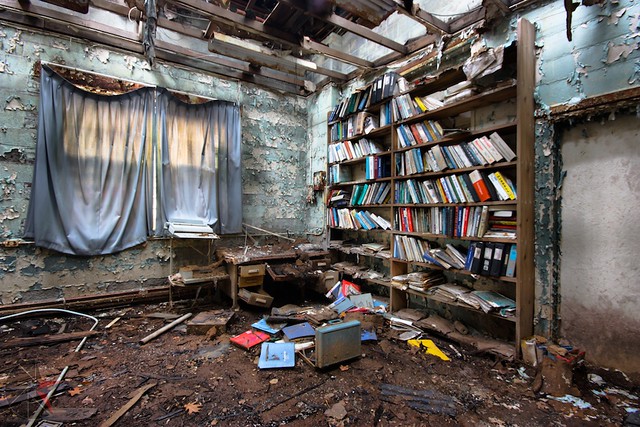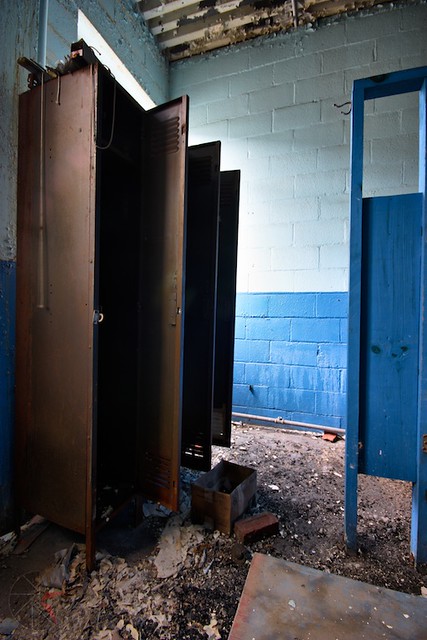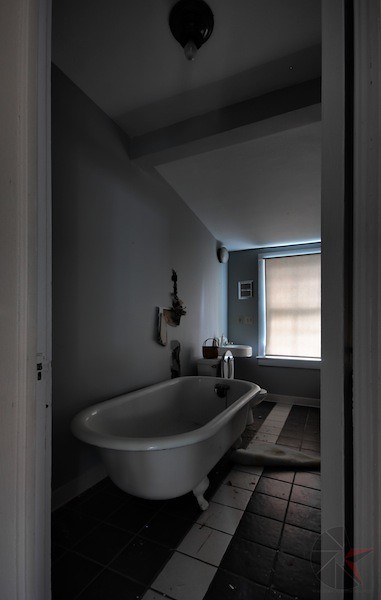No
building was more up-to-date when it was built, or is more obsolete today, than
this train station. The captivating Victorian structure was once a bustling
nerve center for the anthracite coal industry.
Located
in PA facing the railroad tracks, the 2½-story train station still boasts an
overhanging hipped and gable roof with a large wooden cupola. Today, however,
the train station sits on a neglected lot in a state of disrepair, its 1½ story
wings flanked by dilapidated boxcars.
The
19th century was the halcyon era of the Great American Railroad. Locomotives
charged westward to join the continent by iron rail and the nation was hungry
for coal as a fuel to power its steam engines and urban factories. The train
station was the communal hub of every town; the starting point or destination
of adventuresome travelers, businessmen and parents sending loved ones off to
college or war.
The
Town came of age during this era, and its train station was an important part
of its growth. Originally known as the "L&S Station," the train
station was built by the Lehigh Coal & Navigation Company in 1866. It
accommodated railroad traffic between NJ and PA.
The
CNJ Railroad leased the line in 1871 & in the early 20th century, the CNJ
was the sole lessor of the tracks and the name of the station was changed to
reflect that fact. Passenger travel also increased. To appeal to more affluent
entrepreneurs, tycoons and political bosses who traveled the line, the CNJ made
some lavish interior renovations to its station.
Fireplaces
were added. Hand-carved mahogany paneling was affixed to the plaster walls in
many rooms, along with hand-laid wooden flooring. Ornate frosting was spackled
to the ceiling and a resplendent, curved staircase banister added, both of
which gave an aristocratic air to the structure.
The
fortunes of the CNJ Railroad came to a screeching halt with the Great
Depression. Passenger service declined and anthracite coal prices plummeted,
forcing the CNJ into receivership. Not until the early 1950s did it emerge from
financial straits, by which time rail travel had given way to the automobile.
Passenger service to the town ceased in July 1963, and the train station closed
in 1972.
But
a successful novelty and toy wholesaler who grew up near the station, purchased
the seven-acre property for a reported $80,000 in 1977 and invested more than
$3 million to restore the once bustling terminal and convert the property into a
unique and opulent nightclub, restaurant, entertainment and hotel complex. He
added dozens of fully restored dining, parlor and sleeping cars on the adjacent
acreage to create a unique hotel comprised completely of rail cars. The train
station site was listed on the National Register of Historic Places and The
Station Nightclub and Restaurant Complex operated successfully as a landmark
hotel, restaurant and entertainment complex into the 1980s.
In
1987, a Steakhouse opened at the station site. In 1988, area businessmen
entered into a lease purchase agreement and the facility continued to operate
as a nightclub and restaurant complex through the 1990s under a succession of
different nightclub and restaurant names. The KF resigned as officers and
directors in 1992.
In
2006 it was sold to the LCR Authority for $5.8 million. The authority said the
county wanted to turn the facility into a regional visitors center.
But
in the ensuing six years, the station remained vacant and continued to
deteriorate. Vandals targeted the complex, tearing copper from the roof and
exterior, smashing windows and spray painting the station and remaining train
cars with graffiti.
By
2012, county manager said he did not support a prior county decision to spend
$2 million renovating the station. He asked the county redevelopment authority
to consider selling the train station and adjoining properties to a private
owner. The authority said it would begin preparing requests for proposals to
market the property.
Today,
many historic train stations across the nation are still in service as museums,
banks, restaurants, and historical societies. In cities like Washington, D.C.,
and Philadelphia, renovated stations are destinations unto themselves even for
those not boarding a train. In other towns, entire neighborhoods and historic
districts have been remade around these architectural gems, restoring their
vitality in novel and interesting ways long after the last train has left the
station.
Sadly,
This train station is a vacant, dilapidated property in need of millions in
restoration work, and one that it being held hostage by the inaction of local
government.












































